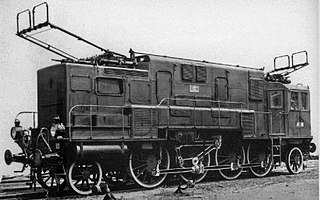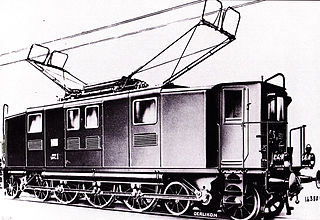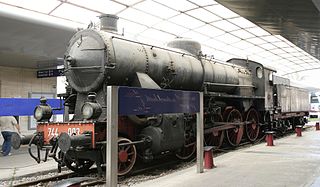This article has an unclear citation style.(April 2018) |
CEMSA (Construzioni Elettro Meccaniche di Saronno) was an Italian engineering company which operated from 1925 to 1948.
This article has an unclear citation style.(April 2018) |
CEMSA (Construzioni Elettro Meccaniche di Saronno) was an Italian engineering company which operated from 1925 to 1948.
CEMSA was founded in Saronno in 1925 by engineer Nicola Romeo and backed by Credito Italiano. It used the former factory of Costruzioni Meccaniche di Saronno which had closed in 1918. In 1935, after a series of writedowns of the share capital, the company was bought by Istituto per la Ricostruzione Industriale (IRI) and the following year it was sold to the aeronautical engineer Gianni Caproni who already controlled Isotta Fraschini.
During World War II, CEMSA built light weapons and, at the end of the war, the company started producing cars thanks to collaboration with the engineer Antonio Fessia,Antonio_Fessia [ it ] who in 1946 had left FIAT. In a few months Fessia, who had transformed CEMSA into a company dedicated to the construction of sports cars, succeeded in designing a car with innovative technical characteristics, the CEMSA Caproni F.11 [ it ], which was presented at the Paris salon in 1947. Only 10 sedan cars of this model were produced. A cabriolet version was also planned but it was not realized due to the financial crisis that hit the company in 1948 and forced it to close. One of the prototypes of the F.11 was shipped to the United States, in the hope of concluding an agreement with the Tucker sales network for the distribution of the model in the US, but this project did not come to fruition because of the closure of the company. In 1953, the Belgian company, Minerva, bought an F.11 in an attempt to put it into production, but even this project failed.
The F.11 was designed by Antonio Fessia and had revolutionary technical characteristics. These included a 4-cylinder boxer engine which was cantilevered with respect to the front axle, steering column gear change, front suspension with transverse leaf spring and front wheel drive. All these innovations were later incorporated into the 1960 Lancia Flavia, also designed by Fessia. The body design was by the company's technicians and was styled by Bertone. When CEMSA closed, most of the ten cars were dispersed but one F.11, in excellent condition, survives on display at the Volandia museum.
Examples of steam locomotives built by CEMSA include:
| Class | Wheels | Railway | Date built | Number built | Notes |
|---|---|---|---|---|---|
| FCL 500 | 2-6-2 | Ferrovie Calabro Lucane | 1930-1932 | 6 | Locomotiva_FCL_500 [ it ] Ferrovie_Calabro_Lucane [ it ] |
| FNM 280 | 4-6-0 | Ferrovie Nord Milano | 1925-1927 | 4 | Locomotiva_FNM_280 [ it ] |
| FNM 290 | 2-6-4T | Ferrovie Nord Milano | 1931 | 4 | Locomotiva_FNM_290 [ it ] |
In 1924 a delegation of FS officials, at the Seddin railway station in Berlin, took an interest in some German railcars during a railway convention. They were two-axle vehicles driven by Benz engines. The 6-cylinder Otto cycle engines with carburettors were fuelled by benzole. The transmission comprised a clutch and mechanical gearbox. In the same year, the Romeo company of Milan obtained the construction license and put it into operation in the new CEMSA factory in Saronno, launching series production. The FS ordered three units, fuelled by a mixture of naphtha and petrol with the application of a special patented carburettor by Aliverti, although two were actually built in Germany. The units were:
Two other units were purchased by the Italian Railway and Tramway Company and by the Compagnie des Chemins de Fer du Midi de Italie (CFMT) which operated the Ferrovia Alifana.
Electric locomotives built by CEMSA included:
| Class | Wheels | Railway | Date built | Number built | Notes |
|---|---|---|---|---|---|
| FAV Class E.440 | D | Ferrovia Alta Valtellina (FAV) | 1932 | 3 | |
| FS Class E.333 | 1-C-1 | Ferrovie dello Stato (FS) | 1922-1924 | 40 | (1) |
| FS Class E.471 | 1-D-1 | FS | 1928 | 1 | |
| FS Class E.552 | E | FS | 1922-1923 | 15 | (1) |
| FS Class E.554 | E | FS | 1928-1930 | 183 | |
| FS Class E.626 | Bo-Bo-Bo | FS | 1927-1939 | ? |

Alfa Romeo Automobiles S.p.A. is an Italian luxury car manufacturer and a subsidiary of Stellantis. The company was founded on 24 June 1910, in Milan, Italy. "Alfa" is an acronym of its founding name, "Anonima Lombarda Fabbrica Automobili." "Anonima" means "anonymous", which was a legal form of company at the time, as it was founded by anonymous investors. In the initial set-up phase, in order to have a building to produce cars, the company bought the Portello factory building of Darracq in Milan, which was closing up and selling all its assets. The brand is known for sport-oriented vehicles and has been involved in car racing since 1911. Alfa Romeo was owned by Fiat Chrysler Automobiles, the company that was responsible for the production of Alfa Romeo cars until its operations were fully merged with those of the PSA Group to form Stellantis on 16 January 2021.

Front-wheel drive (FWD) is a form of engine and transmission layout used in motor vehicles, where the engine drives the front wheels only. Most modern front-wheel-drive vehicles feature a transverse engine, rather than the conventional longitudinal engine arrangement generally found in rear-wheel-drive and four-wheel drive vehicles.

An articulated locomotive is a steam locomotive with one or more engine units that can move independent of the main frame. Articulation allows the operation of locomotives that would otherwise be too large to negotiate a railroad's curves, whether mainlines or special lines with extreme curvature such as logging, industrial, or mountain railways.

The British Railways Class D3/7 is a class of 0-6-0 diesel electric shunting locomotives built as LMS Nos. 7080–7119. The class were built from May 1939 through to July 1942 by the London, Midland and Scottish Railway at their Derby Works using a diesel electric transmission supplied by English Electric.

Motor Rail was a British locomotive-building company, originally based in Lewes, Sussex, they moved in 1916 to Bedford. In 1987 loco manufacture ceased, and the business line sold to Alan Keef Ltd of Ross-on-Wye, who continue to provide spares and have built several locomotives to Motor Rail designs.

The ALFA 24 HP is 4.1-litre four-cylinder passenger car, the first model produced by Italian car manufacturer ALFA, which in 1919 would become Alfa Romeo. It was introduced in 1910, the year ALFA was founded, and produced until 1914 in ALFA's Portello factory near Milan. The model's name comes from its tax horsepower rating, then frequently used as vehicle designation.

Nicola Romeo was an Italian engineer and entrepreneur mostly known for founding the car manufacturer Alfa Romeo. He served as a senator in the 18th Legislature of the Kingdom of Italy.

Maschinenfabrik Esslingen (ME), was a German engineering firm that manufactured locomotives, tramways, railway wagons, roll-blocks, technical equipment for the railways,, bridges, steel structures, pumps and boilers.

A steam motor is a form of steam engine used for light locomotives and light self-propelled motor cars used on railways. The origins of steam motor cars for railways go back to at least the 1850s, if not earlier, as experimental economizations for railways or railroads with marginal budgets. These first examples, at least in North America, appear to have been fitted with light reciprocating engines, and either direct or geared drives, or geared-endless chain drives. Most incorporated a passenger carrying coach attached to the engine and its boiler. Boiler types varied in these earlier examples, with vertical boilers dominant in the first decade and then with very small diameter horizontal boilers. Other examples of steam motor cars incorporated an express-baggage or luggage type car body, with coupling apparatus provided to allow the steam motor car to draw a light passenger coach. An early example with the all-in-one was photographed working on the Nashville, Chattanooga & St. Louis Railroad during the American Civil War, in Tennessee, circa 1863-64. One American firm, Grice & Long, devised various versions in the mid-1860s for use on suburban and city street railways, using their proprietary mechanical patents. In the 1930s some highly evolved steam motors represented one of the final developments of the steam locomotive. The concurrent development of internal combustion-powered or electric-motored railway motor cars proved most popular circa 1900-1950s and those obviating the need for steam-powered cars.

Officine Ferroviarie Meridionali or OFM was an Italian railway and rolling stock manufacturing company based at Naples.

The Ferrovie dello Stato Class 625 is a class of 2-6-0 'mogul' steam locomotives in Italy. The class is commonly known by the nickname Signorine, or Signorina in the singular, because of their perceived grace and beauty compared to other locomotives.

The Ferrovie dello Stato Italiane Class 690 was a 4-6-2 'Pacific' steam locomotive for express trains.

The Ferrovie dello Stato Italiane Class 470 is a 0-10-0 steam locomotive.

The FS Class E.471 locomotives were prototype three-phase AC electric locomotives designed for the Italian State Railways (FS). They constituted the first Italian experiment in using a phase converter. The final goal was to power them with single-phase alternating current, constituting the first case of a European locomotive of this type designed according to modern criteria. However, the difficulty of the development, and political interference, led to the abandonment of the project.

The Ferrovia Alta Valtellina (FAV) is a railway line in Italy which connects Sondrio, in Valtellina, to Tirano in Alta Valtellina. The railway company was established in 1899 and the line opened in 1902. Many railways in Italy were nationalized in 1905 but the Ferrovia Alta Valtellina escaped and was not nationalized until 1970.
Costruzioni Meccaniche di Saronno was an Italian company producing steam locomotives and cars, active from 1887 to 1918.

FS Class E.332 was a class of three-phase electric locomotives of the Italian State Railways (FS). They were used for the haulage of passenger trains between 1917 and 1963. Designed and built at the same time as the FS Class E.331, they represented an attempt by FS to extend the use of three-phase AC electric traction from primary to secondary routes. Their performance was disappointing and they were relegated to a marginal role, in which they remained despite several modifications.
The FS Class E.621 was a class of five electric locomotives of the Italian State Railways (FS). They were rebuilt in 1947 from FS Class E.620, which was originally built in 1925. The main change was conversion from 650 V DC third rail to 3,000 V DC overhead line power supply.

The Ferrovie dello Stato Class 744 is a class of 2-8-0 steam locomotives; they were the last orthodox steam locomotives built for the FS.
The R.301 locomotive was a steam locomotive with narrow gauge for passenger and freight service that served on the Sicilian narrow gauge railway network and of the former colonies, Eritrea and Libya.